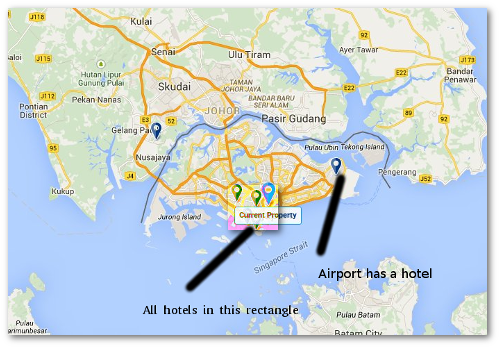Friday, March 27th, 2015, 7:39 pm
Singapore is Not a Success Story
Against the myth and against lionisation of autocrats like King Abdullah of Saudi Arabia or Lee Kuan Yew of Singapore
 ast week the so-called founder of Singapore, Lee Kuan Yew, died. He did not build Singapore, it was workers (usually foreigners) who built Singapore, but he liked taking credit for everything, not just controlling everyone. He was somewhat of a tyrant, but nobody is allowed to say it. It’s not politically-correct to say it in the West and it is dangerous to say it if you live in Singapore, where trigger-happy censorship is common and people can be ‘disappeared’. Even in his so-called ‘retirement’, despite not being elected, Lee Kuan Yew continued to manage everything (albeit behind the scenes).
ast week the so-called founder of Singapore, Lee Kuan Yew, died. He did not build Singapore, it was workers (usually foreigners) who built Singapore, but he liked taking credit for everything, not just controlling everyone. He was somewhat of a tyrant, but nobody is allowed to say it. It’s not politically-correct to say it in the West and it is dangerous to say it if you live in Singapore, where trigger-happy censorship is common and people can be ‘disappeared’. Even in his so-called ‘retirement’, despite not being elected, Lee Kuan Yew continued to manage everything (albeit behind the scenes).
I have written dozens of things (maybe between 50 to 100 tweets for example) in various places online in an effort to debunk the myth, especially when the myth expanded upon the death of the founder. This baffled some who did not understand why I was chastising a country that I had only just returned from.
More than 2 years ago I spent a lot of time studying Singapore. I spent many hours in Google StreetView, Google Maps, etc. and I inquired about houses there (crazy prices) and routinely spoke to my sister in law who lives there. Later on I found some blogs which explained to me more about the hidden side of Singapore and then I learned the breaking story of Shane Todd with much interest. It seems likely that he was ‘suicided’. Since there is no free press in Singapore, don’t expect Singaporeans to know much about it (or to know the important facts about it).
Singapore, as it turns out, is somewhat of a sham. I saw the negative things when I was there; poverty, exploitation, you name it…
Singapore is not the success story that Western leaders try to tell us about as means of selling autocracy (decisions from above without consent). They want to justify autocracy in Western nations (it’s already happening under the auspices of corporations). Singapore is in many ways a failure with pressured children (low birth rates and super-high expectations) who turn suicidal rather early (like in South Korea or Japan) and it puts a deceiving face to the outside world by means of oppressive censorship (gagging or misinforming outsiders). Singapore has a high level of investment (maybe even debt) in a tourism ‘ghetto’ which it still invests a lot of money in. The priority is image, not happiness.
My wife and I stepped outside this tourism ‘ghetto’ in an effort to study the real Singapore — the one that anonymous blogs (afraid of their regime) write about. We saw unpleasant things and should have taken more photos to document them (but didn’t). People work hard in physical jobs at a very old age (maybe over 80), people sleeping on the floor, an enforcer with a Star Wars-inspired stick telling me not to eat peanuts outside the train… those are not the images Singapore wants you to see. But that’s Singapore; rock the boat a little or step out of the boundaries and you will see it.
Strictness over location of hotels in Singapore helps one understand how the founder of the country helps control the image so as to show all tourists only the ‘Disneyland’ but not slums. All hotels in Singapore (plenty of them) are mapped below, buffered by fancy malls, banks, and shallow entertainment for those who love consumerism.
Don’t fall for the myth of Singapore; sure, it’s nicer than China (never mind the vast wealth gap between rich and poor), but it is built by foreign ‘slaves’ (foreign workers who are not even protected by minimum wage laws and suffer from deadly, lax safety regulations) and it is even somewhat of a hellhole to many of the local residents who have Singaporean nationality and are forced to joint the Army (Singapore does a good job hiding its weapons apparatus, including that which exported poisons to Iraq). A lot of this military aspect of Singapore turned its business/industry into borderline inhumane, much like in Israel, which is also tiny and surrounded by hostile nations.
Maybe there are those who seek to justify oppressive authority in Singapore. But please, don’t use the ‘Singapore model’ to sell us the Singapore-inspired autocracy here in the West. The same can be said about Saudi Arabia, but that’s slightly older news (Abdullah’s death), except if we consider how it uses US-exported weapons to bomb the Hell out of Yemen right now.






 Filed under:
Filed under: 


March 27th, 2015 at 10:29 pm
wow… You sure know how to rant. You have just enlightened me why Lee Kuan Yew oppressed free press. To prevent emotional ranters like yourself making sweeping statements.
April 1st, 2015 at 12:32 pm
I don’t think you even understand what “free press” means based on your response.